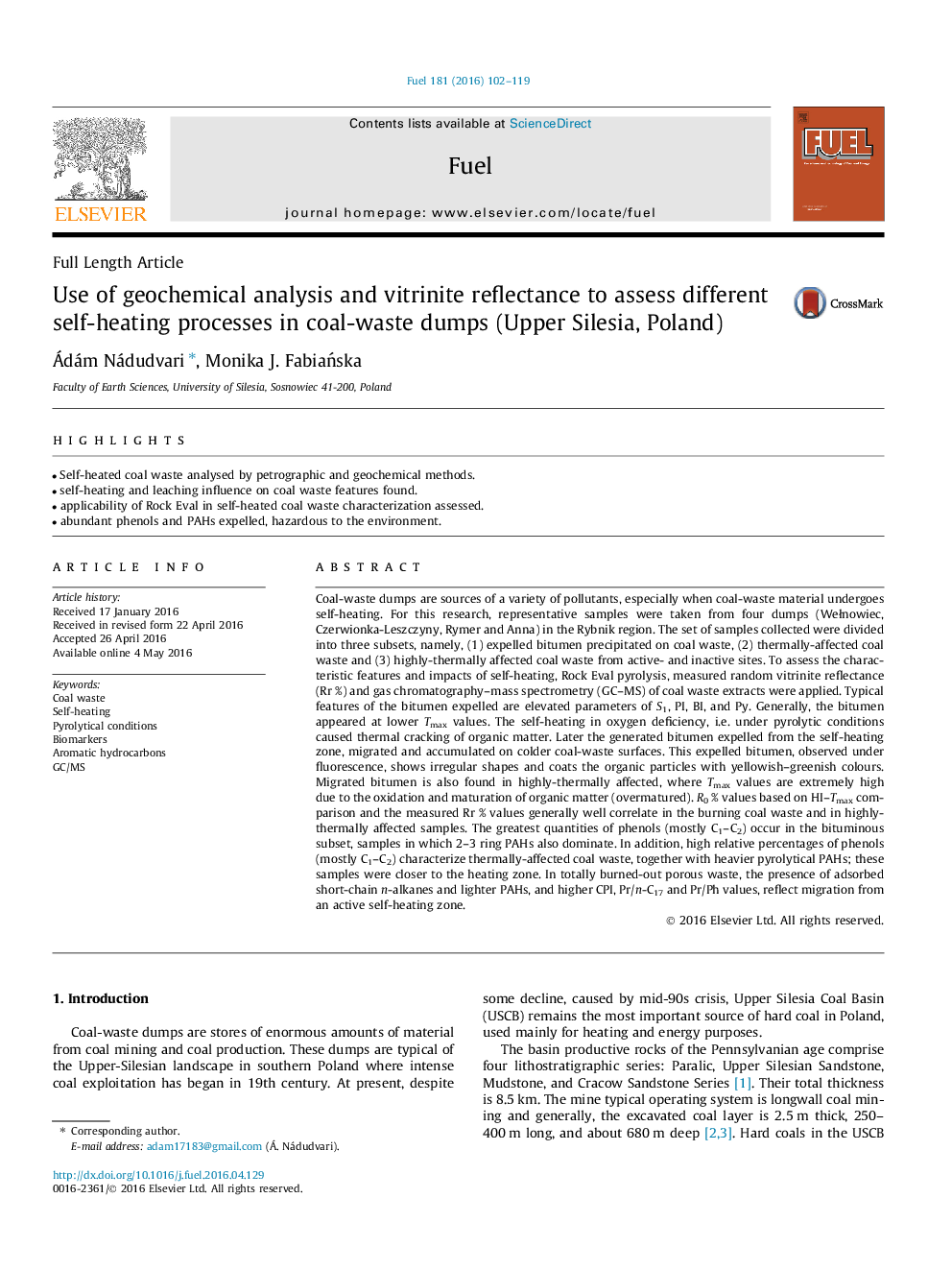| کد مقاله | کد نشریه | سال انتشار | مقاله انگلیسی | نسخه تمام متن |
|---|---|---|---|---|
| 204900 | 461093 | 2016 | 18 صفحه PDF | دانلود رایگان |

• Self-heated coal waste analysed by petrographic and geochemical methods.
• self-heating and leaching influence on coal waste features found.
• applicability of Rock Eval in self-heated coal waste characterization assessed.
• abundant phenols and PAHs expelled, hazardous to the environment.
Coal-waste dumps are sources of a variety of pollutants, especially when coal-waste material undergoes self-heating. For this research, representative samples were taken from four dumps (Wełnowiec, Czerwionka-Leszczyny, Rymer and Anna) in the Rybnik region. The set of samples collected were divided into three subsets, namely, (1) expelled bitumen precipitated on coal waste, (2) thermally-affected coal waste and (3) highly-thermally affected coal waste from active- and inactive sites. To assess the characteristic features and impacts of self-heating, Rock Eval pyrolysis, measured random vitrinite reflectance (Rr %) and gas chromatography–mass spectrometry (GC–MS) of coal waste extracts were applied. Typical features of the bitumen expelled are elevated parameters of S1, PI, BI, and Py. Generally, the bitumen appeared at lower Tmax values. The self-heating in oxygen deficiency, i.e. under pyrolytic conditions caused thermal cracking of organic matter. Later the generated bitumen expelled from the self-heating zone, migrated and accumulated on colder coal-waste surfaces. This expelled bitumen, observed under fluorescence, shows irregular shapes and coats the organic particles with yellowish–greenish colours. Migrated bitumen is also found in highly-thermally affected, where Tmax values are extremely high due to the oxidation and maturation of organic matter (overmatured). R0 % values based on HI–Tmax comparison and the measured Rr % values generally well correlate in the burning coal waste and in highly-thermally affected samples. The greatest quantities of phenols (mostly C1–C2) occur in the bituminous subset, samples in which 2–3 ring PAHs also dominate. In addition, high relative percentages of phenols (mostly C1–C2) characterize thermally-affected coal waste, together with heavier pyrolytical PAHs; these samples were closer to the heating zone. In totally burned-out porous waste, the presence of adsorbed short-chain n-alkanes and lighter PAHs, and higher CPI, Pr/n-C17 and Pr/Ph values, reflect migration from an active self-heating zone.
Journal: Fuel - Volume 181, 1 October 2016, Pages 102–119